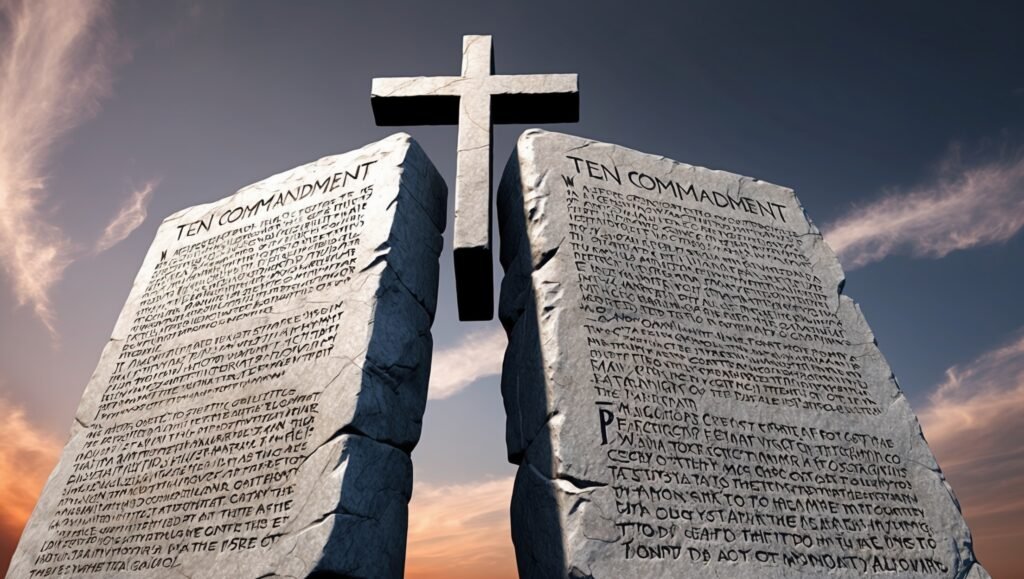Physical Address
304 North Cardinal St.
Dorchester Center, MA 02124
Physical Address
304 North Cardinal St.
Dorchester Center, MA 02124

The Old Testament contains many covenants that were established from God and given to his people. Each covenant could be seen as a benchmark that lays out relational details that pertain to God’s outline of redemption. This outline of redemption is what makes up the framework, or backbone, of the Biblical story. Understanding the covenants is more than just reading them at face value. Beneath the surface, the covenants not only reveal God’s redemptive plan, but also provides a glimpse of the nature and character of God. “If we don’t understand the covenants, we will not and cannot understand the Bible because we won’t understand how the story fits together” (Schreiner, 2017). The purpose of each covenant seems to flow into the next seamlessly, reflecting how God is always in control over every situation. Every covenant demonstrates the power and control that God has over every situation. The covenant made with Abraham and the resulting birth of his son Isaac show that God is capable of overcoming any obstacle that man may think is impossible. The Mosaic, or Sinai, covenant shows that God wants his creation to be aware of their sinful nature and pursue a righteous walk with him. The Davidic covenant reveals that the savior of humankind will be born from the lineage of David, the 2nd king of Israel (2 Sam. 7, New King James Version). Up until this point, the need for a savior and salvation have become increasingly apparent, and the New Covenant establishes the blueprints. The New Covenant describes how God will put his law in their minds, and write it on their hearts, promising to be their God (Jer. 31:31-34, NKJV). Within the New Testament, God’s plan of redemption promised in the New Covenant fully surfaces with Jesus Christ. “Christ’s new Ten Commandments are the general principles of the New Covenant Law.” (Law, 2012). All of the promises that were made to the recipients of the Old Testament covenants are fulfilled throughout all five segments of the New Testament. A closer look into these segments would provide an opportunity to recognize and understand how each of the five sections fulfills God’s promises that are made to Abraham, Israel at Sinai, and David, and also how these same five segments of the New Testament acknowledge and praise Jesus Christ as the source of fulfillment regarding Old Testament promises.
The Gospels, Acts, Paul’s Epistles, General Epistles, and Revelation are the five segments that commonly categorize the New Testament. The amount of promises and prophecies that are fulfilled could be considered overwhelming, but this further reinforces that God consistently keeps his promises. The Abrahamic, Sinaitic, and Davidic covenants contained promises from God that would not be fulfilled until the coming messiah arrives. Each of the five segments of the Bible demonstrate how God’s promises that were made to Abraham, Moses and Israel, and David were fulfilled. The Gospels start off recognizing the fulfillment of Old Testament prophecy by tracing the lineage of Jesus back to Abraham (Matt. 1:17, NKJV). The apostle Paul also confirms many times throughout the book of Acts that God has fulfilled his promises (Hartman, 2017). “You are sons of the prophets, and of the covenant which God made with our fathers, saying to Abraham, ‘And in your seed all the families of the earth shall be blessed” (Acts 3:25, NKJV). The law of Moses and the fulfillment of the New Covenant is recognized in the book of John. “For the law was given through Moses, but grace and truth came about through Jesus Christ” (John 1:17, NKJV). Luke 1:32-33 provides a clear indication of fulfillment when the angel sent by God explains to Mary, “He will be great, and will be called the Son of the Highest; and the Lord God will give Him the throne of His father David. And He will reign over the house of Jacob forever, and of His kingdom there will be no end.”” (Luke 1:32-33, NKJV). The law that was given to Israel from God in the Sinaitic covenant, is referenced when a dispute is brought to the council regarding salvation and the law in Acts 15:6-11. “ The Law functioned within a covenantal framework for the Israelites” (Kamell, 2011). Paul also teaches by referencing the Abrahamic covenant in his epistles, “Just as Abraham “believed God, and it was accounted to him for righteousness. Therefore, know that only those who are of faith are sons of Abraham. And the Scripture, foreseeing that God would justify the Gentiles by faith, preached the gospel to Abraham beforehand, saying, “In you all the nations shall be blessed.” So, then those who are of faith are blessed with believing Abraham.” (Galatians 3:6-9, NKJV). In the General Epistles, Paul refers to the covenant by illustrating the relationship between Abraham and God, and how it was on the basis of his faith and belief in God being counted as righteousness (Rom. 4:3-4, NKJV). The final book of the Bible, Revelation, directly quotes a portion of the Abrahamic covenant during the fulfillment of prophecy, “He will dwell with them, and they shall be His people. God Himself will be with them and be their God” (Rev. 21:3, NKJV). Israel and the Sinaitic covenant that was established on Mt. Sinai, are also connected into the New Testament. “For the law was given through Moses, but grace and truth came through Jesus Christ” (John 1:17, NJKV). In Acts, an issue is settled where the council affirms that salvation is not given through the law, but through the grace of Jesus that also applies to the Gentiles (Acts 15:6-11, NKJV). Another example describing God’s fulfillment of Israel and Old Testament covenants describes where salvation and freedom comes through Jesus Christ, and not the law which entangles with a “yoke of bondage” (Gal. 5:1-3, NKJV). In the General Epistles, Hebrews directly speaks regarding the Sinaitic law, “for the law made nothing perfect; on the other hand, there is the bringing in of a better hope, through which we draw near to God” (Heb. 7:19, NKJV). Israel is sealed prior to the climax of redemption (Rev. 7:4, NKJV).

David and the covenant that was formed between him and God in 2 Samuel 7, is also mentioned and referenced in the New Testament. “He will be great, and will be called the Son of the Highest; and the Lord God will give Him the throne of His father David. And He will reign over the house of Jacob forever, and of His kingdom there will be no end” (Luke 1:32-33, NKJV). Another example recognizes the tabernacle that came from the Davidic covenant, and how God will rebuild it from its ruins (Acts 15:14-18, NKJV). In the book of Galatians, the connection is made showing that Jesus was born under the law, but his sacrifice provided freedom from sin and made us “heirs of God through Christ” (Galatians 4:4-7). 2 Peter reveals the fulfillment of the promise that was made in the Davidic covenant, identifying the establishment of God’s eternal kingdom. “Nevertheless we, according to His promise, look for new heavens and a new earth in which righteousness dwells” (2 Peter 3:13, NKJV). The last mention of David in the New Testament is in the last chapter of Revelation, where Jesus refers to himself as “the Root and the Offspring of David” (Rev. 22:16, NKJV). The references that confirm New Testament fulfillment of the Old Testament covenants are numerous and critical to understanding the purpose and outcome of God’s promises. Not only are there many references that confirm God’s fulfillment, but also many that confirm that these fulfillments are exclusively through Jesus Christ.
The Abrahamic covenant was a revelation from God that showed that from Abraham would come the great nation of God’s people, Israel. The Abrahamic Covenant delineates the unique role that Abraham’s seed will have in God’s plan for the world and paves the way for Israel’s prominent role in that plan” (Grisanti, 1999)
. God provided the law to Israel through the Sinaitic covenant, which revealed their sin and need for a king. God appoints David to be Israel’s 2nd King, and forms a covenant with him, promising that his kingdom will be established forever (2 Sam. 7:16, NKJV). The redemptive outline requires the Old Testament Messiah to be the only one to fulfill prophecy. The New Testament contains an overwhelming amount of evidence that Jesus is the Messiah that is prophesized to come and fulfill God’s redemptive plan. Many of the same verses that were used to tie the five segments of the New Testament into the fulfillment of prophecy are interchangeable in reinforcing the core belief that Jesus Christ is the messiah that is the savior of all and the focus of Christianity. The scriptures that connected the covenants involving Abraham, Israel, and David into the New Testament, also support that Jesus was the one that completed this plan for reclamation of mankind. In the scope of God and his people, the genealogy found in Matthew 1:1 shows that Jesus was the messiah that was prophesized in the Old Testament. Acts 3:25 alludes to the righteousness of Christ being the blessing that Abraham’s seed will obtain. The message found in Galatians 3:6-9 show that all nations will be blessed as a result of Jesus being a descendant of Abraham, and the unconditional sacrifice he paid for the debt of the sins of mankind. Revelation 21:3 announces the fulfillment of the Abrahamic covenant that begins eternal life between God and his people. “There has long been a struggle between the Law of Israel, the Old Covenant, and the Gospel, the New Covenant” (Gibbs, 2000)
Jesus satisfies the Old Testament law by being the Passover lamb without blemish that was slain for the debt of mankind. John 1:17 confirms that Jesus was the one who brought salvation, and not the law. Acts 15:6-11 is another example of Paul confirming that the law is not the way to salvation, but through faith in Jesus. Paul addresses the law and how Jesus fulfilled the New Covenant in Galatians, “For I through the law died to the law that I might live to God. I have been crucified with Christ; it is no longer I who live, but Christ lives in me; and the life which I now live in the flesh I live by faith in the Son of God, who loved me and gave Himself for me. I do not set aside the grace of God; for if righteousness comes through the law, then Christ died in vain” (Gal. 2:19-21, NKJV). In the General Epistles, Hebrews contains another another prime example of how Jesus is listed as “the great shepherd of the sheep whose blood brings peace and was brought back from the dead” (Heb. 3:20, NKJV). Revelation 21:12 confirms Israel’s place by having the names of the twelve tribes of the children of Israel written on the 12 gates in the New Jerusalem. The Davidic covenant is directly connected to Jesus through many passages throughout the five segments of the New Testament. Luke 1:32-33 specifically describes Jesus having the eternal throne room that came from king David. Acts describes that Jesus will be the one to rebuild the tabernacle of David, so that all can seek the Lord (Acts 15:14-18, NKJV). The eternal kingdom that came from the lineage and kingdom of David, is also something that is attributed directly to Jesus Christ (2 Peter 1:10, NKJV). The final mention of David and the significance regarding the connection Jesus has with him, is in Revelation 22:16, where Jesus speaks directly, “I, Jesus, have sent My angel to testify to you these things in the churches. I am the Root and the Offspring of David, the Bright and Morning Star” (Revelation 22:16, NKJV).

The covenants of the Old Testament weave into the structure of the New Testament fulfillment of those covenants. The covenants, from start to finish, contain the principles and characteristics of God and his plan that was laid out long before the covenants were established. The first approach that should be taken when trying to understand the Bible, would definitely have to start with first understanding the covenants. The New Testament is the rollout of God’s action plans that fulfill his Old Testament promises with the promised messiah, Jesus Christ. The scriptures are evidential that God keeps every promise that he makes, and all glory goes to Christ alone for his fulfillment of Old Testament covenants. “Strictly, the law given through Moses to the Jews promised life and warned of a curse against transgressors, whereas the NT offers spiritual grace and salvation freely” (Letham, 2013)
This analysis of the five sections of the New Testament concluded that God’s promises between Abraham, Israel, and David are fulfilled through Jesus Christ, and there are a large amount of scriptures to support that Jesus was the redemptive method that provides exclusive salvation through grace and truth.
Gibbs, G. (2000). What Is New About The New Covenant In Two Pauline Epistles. Theological Research Exchange Network.
Grisanti, M. A. (1999). The Davidic Covenant. The Master’s Seminary Journal, 233-250.
Hartman, D. (2017). The “Children of Abraham” in Luke-Acts. Henoch, 351-365.
Kamell, M. J. (2011). Incarnating Jeremiah’s promised new covenant in the ‘Law’ of James. Evangelical Quarterly, 19–28.
Law, G. R. (2012). The Form of the New Covenant in Matthew. American Theological Inquiry.
Letham, R. (2013). “Not a covenant of works in disguise” (Herman Bavinck): the place of the Mosaic covenant in redemptive history. Mid-America Journal of Theology, 16-34.
Schreiner, T. R. (2017, 07 20). Why We Must Understand the Covenants to Understand the Bible. Retrieved from Crossway: https://www.crossway.org/articles/why-we-must-understand-the-covenants-to-understand-the-bible/